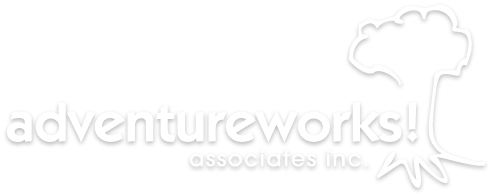Individual Behaviour Preferences + Team Capabilities + Team Aspirations = An Effective Team
/“In the modern age where everything is connected to everything, the most important thing about what you can do is what you can do with others.”
—Paddy Ashdown, British Diplomat
While teams differ in size, scope, and purpose we all want to build and be part of effective and successful teams. So what makes a team effective and, more importantly, how can you make your teams more effective? Keep reading to find out.
Aspects of Effective Teams
New teams are most successful and effective when team members can quickly identify three things: Individual Behaviour Preferences, Team Capabilities and Team Aspirations. Once a common understanding of each member’s behavioural preferences is understood, members can recognize the skill sets that exist in the group, what motivates individual team members, and more importantly, how to motivate team members to get the best out of them and the team. Discovering behaviour preferences and team capabilities makes it much easier to establish shared vision, common goals, and mutually agreeable processes.
Using Adventure To Build Teams
Adventure based learning has tremendous potential to help accelerate the process of building effective teams. Participation in adventure activities provides opportunities for teams to explore commonalities and communication. Adventure based learning also provides great insights into one another’s motivators.
Individual Behaviour Preferences
Behavioural style assessments can provide deeper insight into the preferred styles of an individual. Like most behavioural assessments the Extended DISC helps participants understand their natural styles and preferences by creating a profile which is generated from an online self assessment.
The basic DISC format is uses the four quadrant approach which is built on two continuums: Sensing/Intuition and Thinking/Feeling. Positioning in these four quadrants builds the basic DISC profile, providing the individual with an overview of their natural style. The exciting part of using this kind of tool, is that not only do individual team members better understand their natural preferences and patterns, but they learn strategies for communicating more effectively with people whose styles are different from their own.
Combining DISC with Adventure
We have been practitioners of the Extended DISC system for several years and have helped many teams build the capacity to perform, function, and vision more effectively by combining the Extended DISC system with Adventure Based Learning activities. The DISC system and adventure based activities complement each other nicely as the activities allow teams to experience and explore, first hand, the impact of the patterns and preferences discovered in the DISC analysis. Essentially, adventure based activities help to put the DISC analysis in action.
A great example of this involves utilizing the activity of Fork Wad (found in the book Quicksilver). The basic set up of this activity involves having the group divided into 4 quadrants that are pre-set with ropes. There are 4 different types of resources and each person has one of each of them. Collectively the group must figure out how to quickly and effectively organize the resources (without dropping!) so that all like things live in one quadrant. People cannot physically change quadrants. (There is a little more involved, but you hopefully get the idea) The group typically gets 4 chances to improve their effectiveness and time score.
We like to use this activity right after people have discovered their preferred style or tendency in groups. People will find they are more dominant in one of the 4 DISC quadrants. For this activity we ask group members to organize themselves in a quadrant based on their dominant disk profile. Having all “like” people perform in one quadrant during this activity really helps group members understand, first hand, how similar people behave in groups and start to understand how they can leverage the best out of those whose behaviour style is different from their own.
We have found that utilizing both the behaviour assessment and adventure based learning activities really helps teams gain a deeper understanding of each other and helps to develop concrete strategies for improvement. To learn more about the Extended DISC program click here: http://adventureworks.org/program/disc.html


